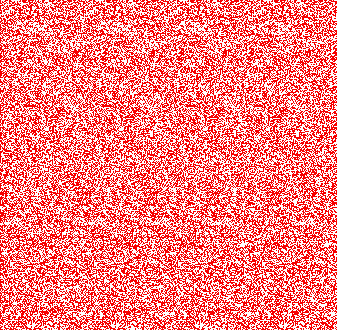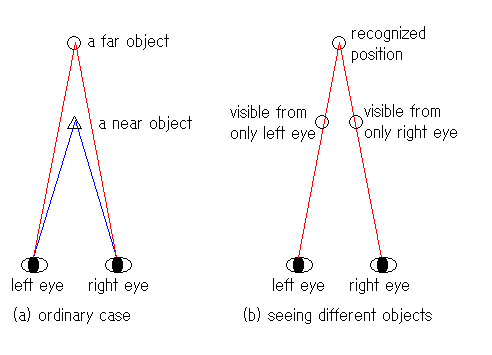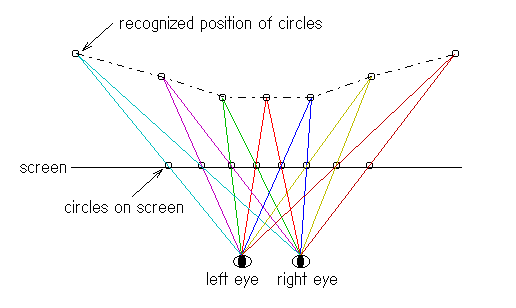
fig.1 Stereogram "Eat it!"
KONDO's Stereogram Workshop

| factor | explanation |
|---|---|
| focal distance | It is identical to focus mechanism of a camera. A lens of an eye is thickened to see a nearer object. |
| both eyes parallax | Triangular surveying from both eyes. Both eyes are let closer to see a nearer object. |
| size of an object | A big object feels nearer. | moving speed of an object | The object which crosses faster feels nearer. |




Last Modified: 14-May-99